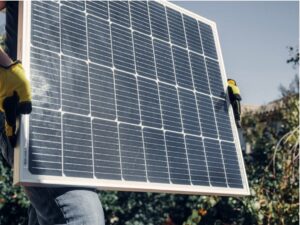In its quest to lead the global energy transition, China continues to impress with revolutionary innovations in the photovoltaic sector. This time, the company Longi, a global leader in solar cell manufacturing, has developed a perovskite-silicon hybrid solar panel, achieving a record efficiency of 34.6%, surpassing the theoretical limit of conventional silicon cells.
The new tandem design combines layers of perovskite and silicon, allowing for more efficient absorption of the solar spectrum. Although the record cell is a prototype, Longi has also introduced commercial versions with efficiencies of 30.1% and 25.8% in full-size panels.
Perovskite has garnered significant interest in the industry due to its low production cost and flexibility, opening up new possibilities for integrating solar panels into windows, textiles, and other innovative surfaces. However, its main challenge has been long-term stability as it tends to degrade over time.

The most innovative solar panel, the perfect balance for the energy of the future
To address this issue, Longi applied heterojunction technology, combining the advantages of silicon and perovskite to enhance efficiency without compromising durability. Their optimized design includes a front surface with a smooth texture and a thicker back, improving energy capture in the infrared range.
These advances, certified by independent bodies, reinforce China’s role as a leader in photovoltaic innovation, surpassing even Japan, a pioneer in perovskite cell development.
The development of these high-efficiency, low-cost solar cells could accelerate the global adoption of renewable energies, reducing production costs and environmental impact. With this new technology, China continues to pave the way towards a more sustainable and innovative future in the energy sector.
In 2024, China achieved a historic record in renewable energy installation
China, the world’s largest emitter of greenhouse gases, installed record levels of renewable energies last year, according to official data released this Tuesday.
In 2024, the country added an installed capacity of around 277 gigawatts (GW) of solar energy, surpassing the 217 GW added in 2023, as reported by the National Energy Administration (NEA). Likewise, it expanded its wind capacity by about 80 GW, also more than the previous year (76 GW).
As a result, the total installed solar and wind energy capacity stands at 887 GW and 521 GW respectively, 15% above the 2030 target of 1,200 GW set by President Xi Jinping.
Have you checked out our YouTube channel? Subscribe now!

